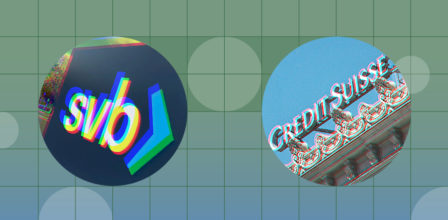Market commentary bonds: Signs of recession are growing stronger
Are resurgent inflation concerns and the increasingly inverted yield curves indicators of an impending recession – or can the economy and a strong labour market hold out? Dr Harald Henke explains what conclusions can be drawn from the current market situation.


Dr. Harald Henke
Head of Fixed Income Strategy
Inflation and inflation expectations
The second quarter of 2023 was marked by renewed inflationary concerns. Although the US inflation rate fell to 4.0%, this was mainly due to volatile energy and food prices. Core inflation rate remained high at 5.3%. In Germany, inflation recently accelerated again from 6.1% to 6.4%, while in the UK it was surprisingly unchanged at 8.7%.
These dynamics mean that even a normalisation of inflation to a monthly increase of 0.2% for Europe would not bring inflation down to levels between 2% and 3% until 2024. This is illustrated in Figure 1.
Figure 1: Inflation development and normalisation path in Europe and the USA
In the US, the inflationary trend and the central bank response had started earlier, and the country is also less dependent on energy and food imports than Europe. But even there, inflation is proving to be more persistent than initially expected.
Economic activity and leading indicators
At the same time, dark clouds are gathering on the economic horizon. While the service sector continues to support the economies of Western Europe and North America, the purchasing managers’ indices for the manufacturing sector are already pointing to a recessionary (US) or even depressionary (Germany) environment, as can be seen in Figure 2.
Figure 2: Purchasing managers’ indices for the manufacturing sector
A value below 50 means declining economic performance, while a value of 41, as in Germany recently, heralds a severe recession in the manufacturing sector. The reason for the deterioration in Germany is probably the precarious energy situation due to the loss of cheap fossil fuels as a result of the sanctions.
Also noteworthy is the historically unprecedented contraction of the money supply in the US and the Eurozone. While the fiscal excesses of the Covid pandemic have also pumped it up before, there has never been a decline in money supply like the one we are now experiencing.
Figure 3: M2 money supply growth in the US and Europe
However, the robust labour market continues to stabilise the economies. Fiscal stimulus (war) as well as demographic labour shortages are keeping unemployment at record lows everywhere. For this reason, particular attention should be paid to the labour market in the third quarter. Any sign of weakness could lead to massive movements in interest rates and spreads.
Interest rates and interest rate expectations
On both sides of the Atlantic, interest rates rose in response to stubborn inflation rather than economic news:
- In Germany, ten-year interest rates rose from 2.29% to 2.39% and two-year rates increased from 2.68% to 3.20%.
- In the US, the rise in interest rates was even greater, with ten-year rates rising from 3.47% to 3.84% and two-year rates from 4.03% to 4.90%.
Expectations of more interest rate hikes by the central bank has driven up interest rates at the short end in particular. Figure 4 shows the difference between ten-year and two-year interest rates for Germany and the USA.
Figure 4: Interest rates and curve slope in the USA and Europe
As can be seen from the chart, the yield curves have again inverted more strongly and are now at the lowest levels of this cycle. This suggests that the market is very pessimistic about the economy, as inverted curves have historically been a reliable indicator of an impending recession in the past.
The reason for this is the expectation of falling short-term interest rates in the future, which central banks are forced to do in a recession. In anticipation of these moves, longer-term interest rates are already lower.
A look at the market’s interest rate expectations, as shown in Figure 5, supports this view.
Figure 5: Money market forward rates in the USA and Europe
Across the second quarter of 2023, the market has priced in two additional rate hikes for the Eurozone and four for the US. The market sees the ECB’s key interest rate at 4% and the Fed’s at 5.25% in December of this year. Over 2024, however, two rate cuts in Europe and five in the US are priced in. This is in line with the weak economic picture suggested by macro indicators.
Credit spreads
Figure 6 shows the development of credit spreads in the Euro and US Dollar IG area and the difference between the two.
Figure 6: Credit spreads in Euro and USD
While European spreads narrowed by 7 basis points to 1.63% in the second quarter, USD spreads fell by as much as 15 basis points to 1.23%. This means that the spreads in Euro IG are 40 basis points higher than in the Dollar area, which is historically unusual, as the average duration of the USD index is around 2.5 years longer and bonds with maturities over 10 years make up more than a third of the index compared to less than 10% in the Euro area. Moreover, the BBB rating range is even slightly less represented in the USD index than in the Euro universe.
The main reason for the divergence of the indices since spring 2022 is the more difficult competitive situation of European companies due to the disproportionate increase in energy costs caused by sanctions and the destruction of parts of the energy infrastructure. This competitive disadvantage and the resulting spread differential are expected to persist for the foreseeable future. Euro-denominated credit is thus likely to remain the higher-yielding, but also riskier investment compared to USD-denominated credit.
Looking more closely at the spread performance in Euros, the different performance of defensive and offensive sectors, as can be seen in Figure 7.
Figure 7: Spreads of offensive and defensive sectors
Although the more offensive sectors have narrowed somewhat more with -11 basis points over Q2 than the more defensive sectors with -4 basis points, the difference between the two sector groups stands at a historically very high level of 65 basis points. From a pure spread perspective, cyclical sectors therefore look attractive. However, in the context of a potential recession, these spreads must be seen as compensation for the increased risk of companies in these sectors.
Summary
At first glance, the trend of the last quarters has continued: On the one hand, inflation remains stubbornly high, preventing central banks from easing monetary policy. On the other hand, the economic signals continue to point downwards and would therefore justify at least an interest rate pause by the central banks.
On closer inspection, however, the recession indicators have become more pronounced, and it is mainly the services sector and the strong labour market that are preventing a major economic downturn. However, there are more and more voices of warning of an imminent recession.
This left the capital markets largely unaffected in the second quarter of 2023. After the rise in risk aversion around the banking crisis in March, risk assets performed strongly in the second quarter, with rising equity prices and falling credit spreads. Whether this will continue in the third quarter seems questionable.


